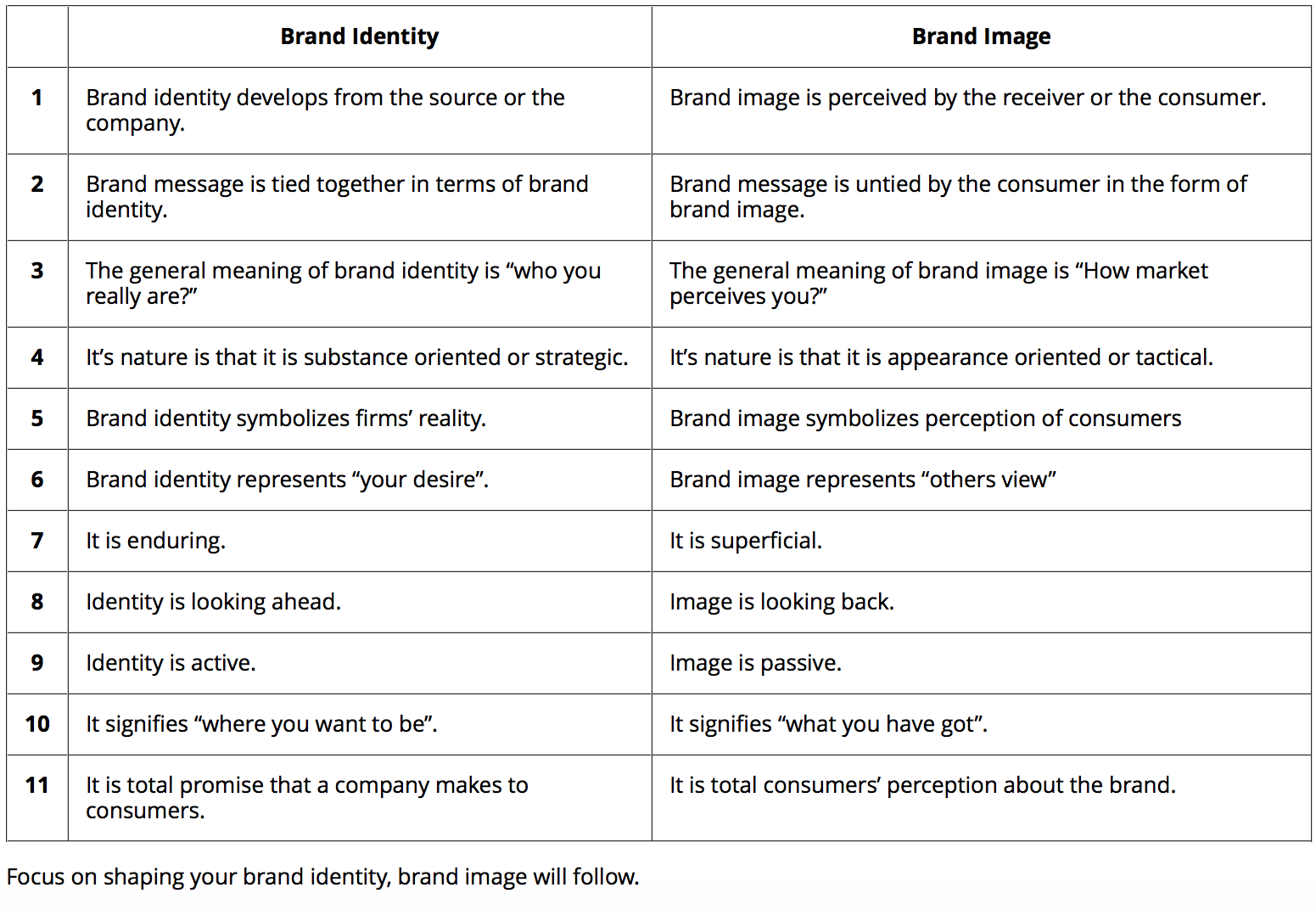
Many entrepreneurs are confused on what a brand actually is and how they can establish a brand. But branding is not rocket science.
What is a brand?
A brand is one of your company’s most valuable assets. “By definition, [a brand] is a distinguishing symbol, mark, logo, name, word, sentence or a combination of these items that companies use to distinguish their product from others in the market.” But it doesn’t stop there.
Brand identity “is how that business wants to be perceived by consumers … [and it] is separate from brand image – the term for how consumers actually perceive the brand.”

Ultimately, branding in its simplest form is when you identify yourself (personal brand) or business (company brand) by what you do, but in terms of why you do it, who you do it for, and communicate your uniqueness in market. It’s a vision (i.e. brand identity) you have of yourself or business and core values.
Branding should be a top priority when you start your business. Not only does it answer the question: “What do we do?” it also helps define the personality and visual components of your business (i.e., company name, logo, tone, tagline, typeface, etc.)
All of this is branding.
Personal brand basics
Your personal brand is a) who you are; b) what you stand for; c) what makes you an expert; and d) defines your strengths and skills. Your personal brand image (how consumers perceive you) is impacted by how authentic you are and how you appear to the world.
Business brand basics
Your business brand is at it’s core the brand basics mentioned above. It communicates what your business is all about. Your company brand communicates who you serve, how you package your expertise, and what results you bring your ideal clients or customers.
It also guides the relationships you build and the marketing strategies you use to build a thriving and successful business. In fact, “branding is the core of your marketing strategy”.
The two are not always mutually exclusive and can impact each other. As a business owner you should always be aware of your personal brand. You may have a successful company brand, but your personal brand plays a major role in establishing your business (especially if you’re just starting out).
Keep in mind, that branding:
-
is what defines your business,
-
captures your ideal clients feelings, and
-
is all about the experiences they feel when they interact with your brand.
Position your brand to stand out
Here’s a look at four ways to make your brand pop.
-
Capture their feelings and emotions with your images, colors, and copy.
-
Be authentic in your message and marketing copy; paying close attention to the way you portray yourself. Don’t be someone your not. Be yourself and you’ll connect with your audience. Plus you’ll build the know, like, and trust factor.
-
Create content that is relevant to your ideal customer. You can’t write about How to make cocktails one day and then write about How to create a website using the top website builder tools the next. It all has to be consistent and relevant to your niche.
-
Your brand should tell a story. This means when someone sees a photo on your Instagram account or you’re latest video on Snapchat, your content needs to tell a cohesive story that your audience can relate to.
This article has been edited and condensed.
Christine Arhu, a business strategist for female entrepreneurs, helps women start and build successful businesses and online brands. Her passion is empowering women to find their purpose and use that purpose to pursue their passions. Besides coaching, she is a web designer and is also a photographer. Connect with @ChristineArhu on Twitter.
© YFS Magazine. All Rights Reserved. Copying prohibited. All material is protected by U.S. and international copyright laws. Unauthorized reproduction or distribution of this material is prohibited. Sharing of this material under Attribution-NonCommercial-NoDerivatives 4.0 International terms, listed here, is permitted.







